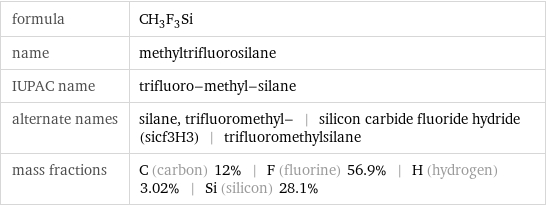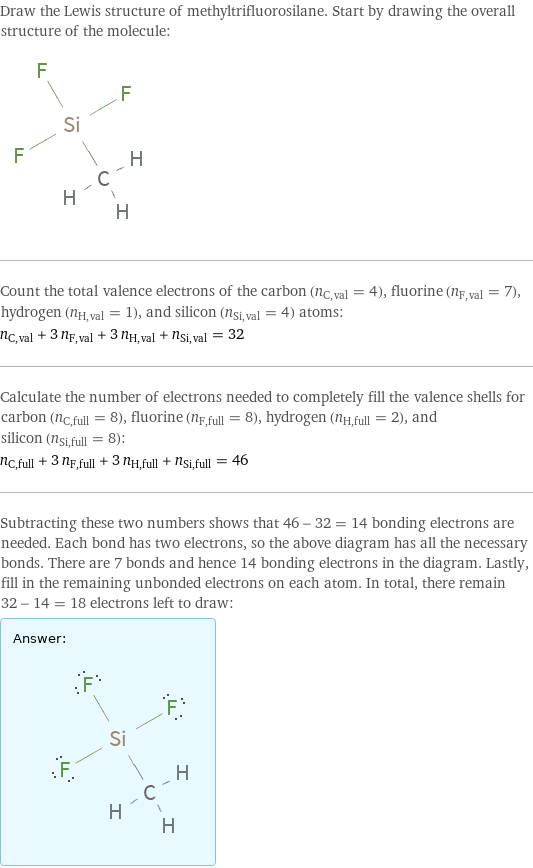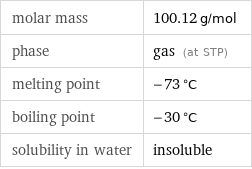Input interpretation

methyltrifluorosilane
Chemical names and formulas

formula | CH_3F_3Si name | methyltrifluorosilane IUPAC name | trifluoro-methyl-silane alternate names | silane, trifluoromethyl- | silicon carbide fluoride hydride (sicf3H3) | trifluoromethylsilane mass fractions | C (carbon) 12% | F (fluorine) 56.9% | H (hydrogen) 3.02% | Si (silicon) 28.1%
Lewis structure

Draw the Lewis structure of methyltrifluorosilane. Start by drawing the overall structure of the molecule: Count the total valence electrons of the carbon (n_C, val = 4), fluorine (n_F, val = 7), hydrogen (n_H, val = 1), and silicon (n_Si, val = 4) atoms: n_C, val + 3 n_F, val + 3 n_H, val + n_Si, val = 32 Calculate the number of electrons needed to completely fill the valence shells for carbon (n_C, full = 8), fluorine (n_F, full = 8), hydrogen (n_H, full = 2), and silicon (n_Si, full = 8): n_C, full + 3 n_F, full + 3 n_H, full + n_Si, full = 46 Subtracting these two numbers shows that 46 - 32 = 14 bonding electrons are needed. Each bond has two electrons, so the above diagram has all the necessary bonds. There are 7 bonds and hence 14 bonding electrons in the diagram. Lastly, fill in the remaining unbonded electrons on each atom. In total, there remain 32 - 14 = 18 electrons left to draw: Answer: | |
3D structure

3D structure
Basic properties

molar mass | 100.12 g/mol phase | gas (at STP) melting point | -73 °C boiling point | -30 °C solubility in water | insoluble
Units

Thermodynamic properties

molar heat of vaporization | 23.7 kJ/mol specific heat of vaporization | 0.237 kJ/g (at STP)
Chemical identifiers
(F)F InChI identifier | InChI=1/CH3F3Si/c1-5(2, 3)4/h1H3 EU number | 206-770-6](../image_source/782c64780067d40419a9923fd5a4d7ec.png)
CAS number | 373-74-0 Beilstein number | 1732819 PubChem CID number | 67804 SMILES identifier | C[Si](F)(F)F InChI identifier | InChI=1/CH3F3Si/c1-5(2, 3)4/h1H3 EU number | 206-770-6
Safety properties

flash point | -68 °C

DOT numbers | 3308